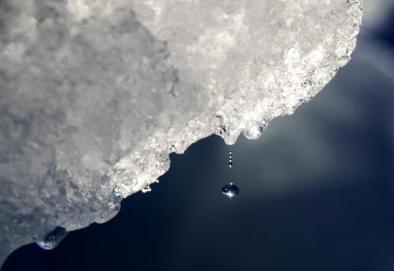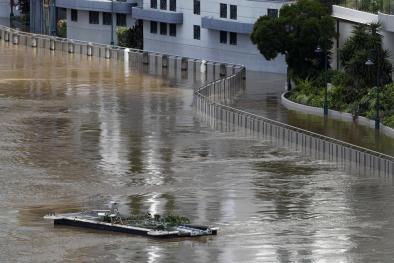Science Source
Changes in continental freshwater discharge from 1948 to 2004
- Analyzes a dataset of historical monthly streamflow at the farthest downstream stations for the world’s 925 largest ocean-reaching rivers
- States that gauge records cover ∼80 × 106 km2 or ∼80% of global ocean-draining land areas and accounts for about 73% of global total runoff
- States that for most of the large rivers, the record for 1948–2004 is fairly complete
- Uses the model-simulated runoff ratio over drainage areas with and without gauge records to estimate the contribution from the areas not monitored by the gauges in deriving the total discharge into the global oceans
- Results reveal large variations in yearly streamflow for most of the world’s large rivers and for continental discharge, but only about one-third of the top 200 rivers (including the Congo, Mississippi, Yenisey, Paraná, Ganges, Columbia, Uruguay, and Niger) show statistically significant trends during 1948–2004, with the rivers having downward trends (45) outnumbering those with upward trends (19)
- Finds that the interannual variations are correlated with the El Niño–Southern Oscillation (ENSO) events for discharge into the Atlantic, Pacific, Indian, and global ocean as a whole
- Finds that for ocean basins other than the Arctic, and for the global ocean as a whole, the discharge data show small or downward trends, which are statistically significant for the Pacific (−9.4 km3 yr−1)
- Finds that precipitation is a major driver for the discharge trends and large interannual-to-decadal variations
- Finds that direct human influence on annual streamflow is likely small compared with climatic forcing during 1948–2004 for most of the world’s major rivers
- Finds that for the Arctic drainage areas, upward trends in streamflow are not accompanied by increasing precipitation, especially over Siberia, based on available data, although recent surface warming and associated downward trends in snow cover and soil ice content over the northern high latitudes contribute to increased runoff in these regions
- States the results are qualitatively consistent with climate model projections but contradict an earlier report of increasing continental runoff during the recent decades based on limited records
Related Content
Headline

Apr 3, 2022 | AP
Fire and rain: West to get more one-two extreme climate hits
Headline

Mar 21, 2022 | Climate Nexus Hot News
Heatwaves At Poles; Drought, Floods, Hurricanes Everywhere In Between
Science Source
| Scientific Reports
Turbidity and fecal indicator bacteria in recreational marine waters increase following the 2018 Woolsey Fire
Marisol Cira, Anisha Bafna, Christine M. Lee et al
Headline

Mar 3, 2022 | Climate Nexus Hot News
Massive Floods Submerge Eastern Australia


